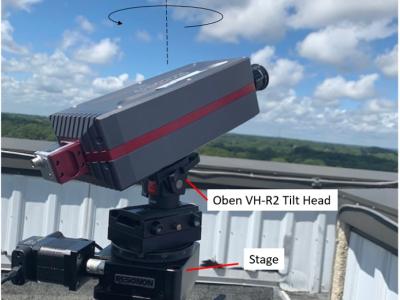Datasets
Standard Dataset
Cloud Radiance HSI
- Citation Author(s):
- Submitted by:
- OLCAY KURSUN
- Last updated:
- Thu, 05/09/2024 - 11:15
- DOI:
- 10.21227/75e3-4e88
- License:
 243 Views
243 Views- Categories:
- Keywords:
Abstract
This dataset includes 30 hyperspectral cloud images captured during the Summer and Fall of 2022 at Auburn University at Montgomery, Alabama, USA (Latitude N, Longitude W) using aResonon Pika XC2 Hyperspectral Imaging Camera. Utilizing the Spectronon software, the images were recorded with integration times between 9.0-12.0 ms, a frame rate of approximately 45 Hz, and a scan rate of 0.93 degrees per second. The images are calibrated to give spectral radiance in microflicks at 462 spectral bands in the 400 – 1000 nm wavelength region with a spectral resolution of 1.9 nm. A 17 m focal length objective lens was used giving a field of view equal to 30.8 degrees and an integration field of view of 0.71 mrad. These settings enable detailed spectral analysis of both dynamic cloud formations and clear sky conditions. Funded by NSF grant 2003740, this dataset is designed to advance understanding of diffuse solar radiation as influenced by cloud coverage.
The dataset is organized into 30 folders, each containing a hyperspectral image file (.bip), a header file (.hdr) with metadata, and an RGB render for visual inspection. Additional metadata, including date, time, central pixel azimuth, and altitude, are cataloged in an accompanying MS Excel file. A custom Python program is also provided to facilitate the reading and display of the HSI files. The images can also be read and analyzed using the free version of the Spectron software available at https://resonon.com/software.
After downloading the dataset, use the provided script located in the zip file to read the hyperspectral image (HSI) cubes.







